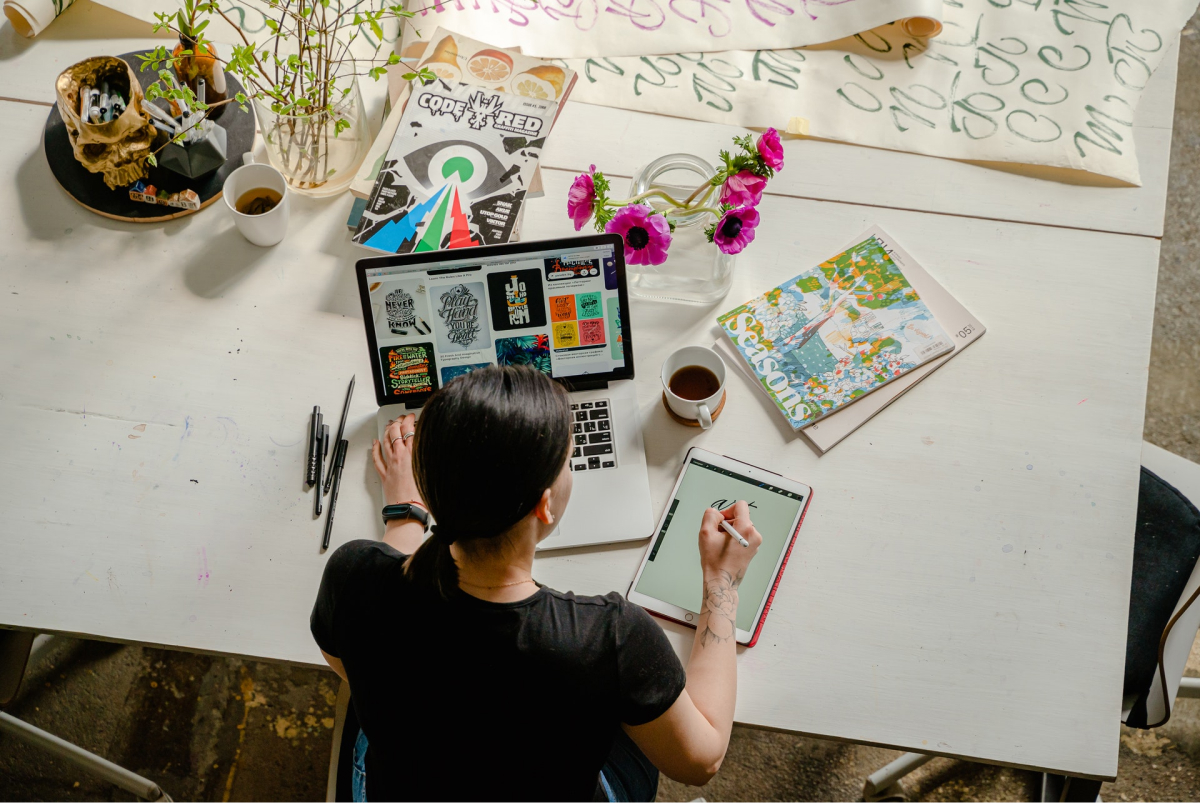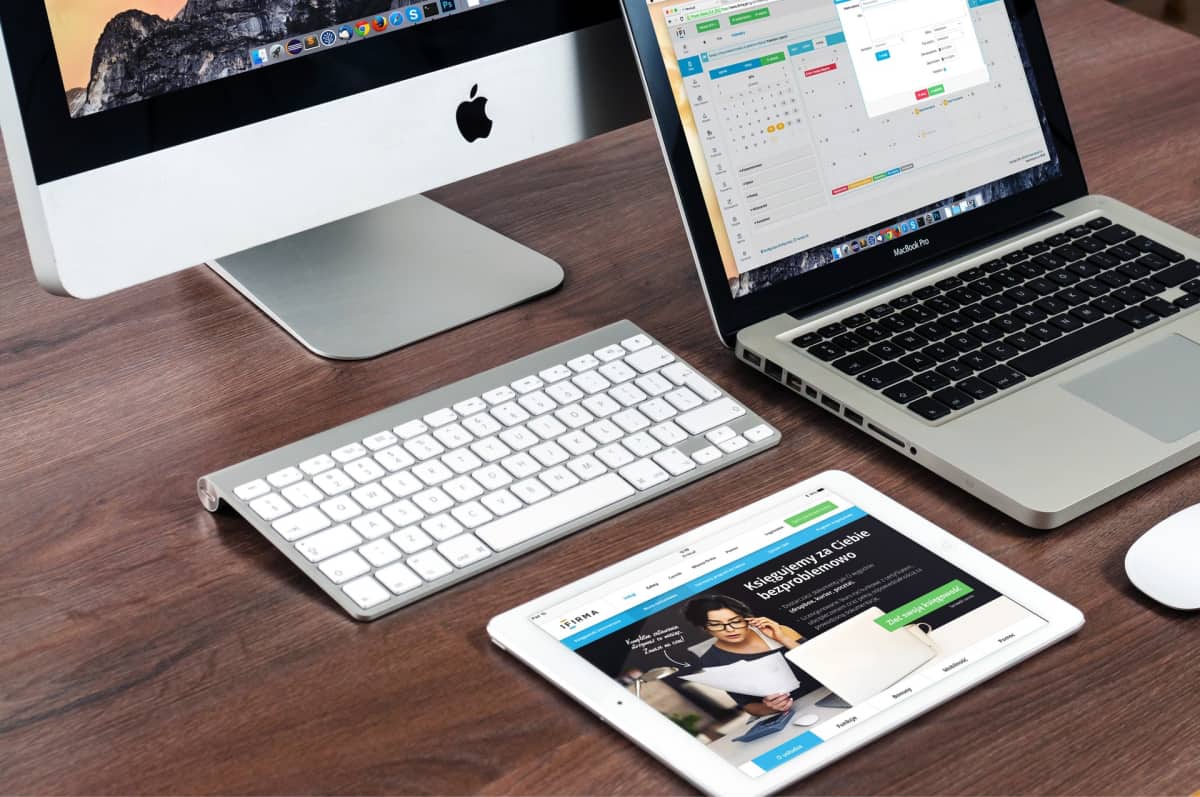Material Design is a design system invented by Google to build better mobile experiences on Android and beyond. The company defines it as “a visual language for our users that synthesizes the classic principles of good design with the innovation and possibility of technology and science.”
We’ve written extensively about the philosophies behind Material Design, and today we hone in on the resources designers leverage to speed up the design process. In particular, a Material Design kit can help designers gain access to fonts, palettes, shapes, and more that will help them prototype faster. Designers shouldn’t have to create everything from scratch when starting a new mobile app project. That’s why they turn to Material Design kits. These resources act as a library of design templates and assets to move a prototyping project along faster.
Why Do Designers Use Material Design Kits?
Before we dive into the resources that designers rely on, we wanted to explore what Material Design kits are and why creatives choose to use them. To understand this, we need to first understand more about Material Design. Google provides additional context, calling Material “an adaptable system of guidelines, components, and tools that support the best practices of user interface design. Backed by open-source code, Material streamlines collaboration between designers and developers and helps teams quickly build beautiful products.”
Design kits that rely on this philosophy package up essential source files to ensure that designers can move quickly and produce higher-quality designs. They act as a strong foundation for taking your creativity further since the basics have already been covered. The best Material Design resources are customizable to truly make your design your own while using design conventions and best practices that end users expect to see.
When designing for Android, Material Design kits also have the added bonus of being aligned with Google’s Material Design Guidelines, meaning that “All of the components, layouts, and typography combinations are made according to specifications” put forth by Google according to Get Simple Studio.
There are several factors that designers should look out for when considering a Material Design kit, including:
- App templates broken down by genre: Why reinvent the wheel when you can tap into existing designs that you can add your personal flavor to?
- UI elements that make mobile experiences work smoothly, such as buttons, toggles, menus, badges, and more.
- Resizable fonts that will work across Android devices.
- Icons and color palette ideas.
- The ability to resize your design based on specific types of mobile devices.
What a Designer Has to Say About it
To learn more about Material Design resources, we tapped into designers who have Material Design best practices to share with their community. Daniela Sawyer, Founder and Business Development Strategist of FindPeopleFast.net offered some of her favorite aspects of Material Design kits:
- “UI kits: Almost every UI designer likes to start a project with basic UI kits. These are very useful and save time that would be spent on beginning from scratch.
- “Icons: Material Design introduces a selected icon style for two purposes. First, product icons are colorful with shades, and delightful details are dedicated to the app’s launcher icon symbols. The other in-app system icons are usually mono-color flat pictograms.
- “Patterns: It is excellent for beginning market research. It has UIs from other platforms as well, with Material Design screenshots.”
Daniela’s experience with Material Design kits points to the importance of having a strong starting place. Designers should have access to the most up-to-date design resources when working on a new app so that what they build on top will fit in with current design conventions and not take forever to bring to market. After all, design and the competition both change at the speed of light. Taking too long to release your app idea to stakeholders, investors, and customers could mean that your app design will be outdated or (even worse) a competitor might beat you to the punch and take market share that you’ll never be able to get back. That’s exactly why we want to dive into shortcuts associated with Material Design.
Material Design Shortcuts Designers Need to Know
Material Design kits are the ultimate supercharger for mobile app design efforts, but many others are worth learning about. Daniela offered up three shortcuts related to Material Design:
- “After Effect shorts: It is one of the most creative and one of the most used apps. You can quickly animate or design anything.
- “VS Code: It is a modern and open-source text and code editor. Very handy and easy to use; most developers use this.
- “Transmit: It is the fastest macOS FTP client. Upload, download, and manage files on many servers with a simple, familiar, and powerful UI.”
These tools are especially helpful, regardless of a designer’s technical abilities. They provide guardrails for planning, developing, and designing the perfect mobile app.
Proto.io Speeds up Prototyping with its Material Design Library
We would be remiss if we forgot to mention our own handy Material Design offerings. We provide designers with a rich library of over 350 ready-to-use Material Design elements. More specifically, 140+ Material Design components and 240+ Material Design templates.
All of these assets enable users to find a huge variety of the most popular components, such as bars, buttons, switches, snackbars, text fields, etc. All components and templates in our Material Design library are 100% customizable, so users can change their size, color, text, and other properties to match their creative vision. They are extremely easy to use, as all it takes is to drag and drop them to the canvas to start prototyping. These features help maintain design and UX consistency as they all follow the latest Material Design guidelines. And as the cherry on top, there is no coding required: Proto.io is a code-free tool, equally accessible to all users. Get started for free to experience our Material Design kit for yourself.
Closing Thoughts
Material Design is a design philosophy or system that helps designers create unified mobile experiences across all platforms. The speed and agility with which creatives can design when armed with a Material Design kit is unmatched.
This design resource democratizes the app design process, as technical knowledge shouldn’t be a barrier to creating something amazing. Here at Proto.io, we believe that anyone with a great idea for an app should be able to tap into the greatest styles and templates to bring it to life in record time.
What material design kit resources do you swear by? Let us know by tweeting us @Protoio.
Proto.io helps you bring your idea to life in no time, with no coding skills required. It’s ideal for UX designers, entrepreneurs, product managers, marketers, students, and anyone with a great idea. Sign up for a free 15-day trial to start building your first prototype today!








